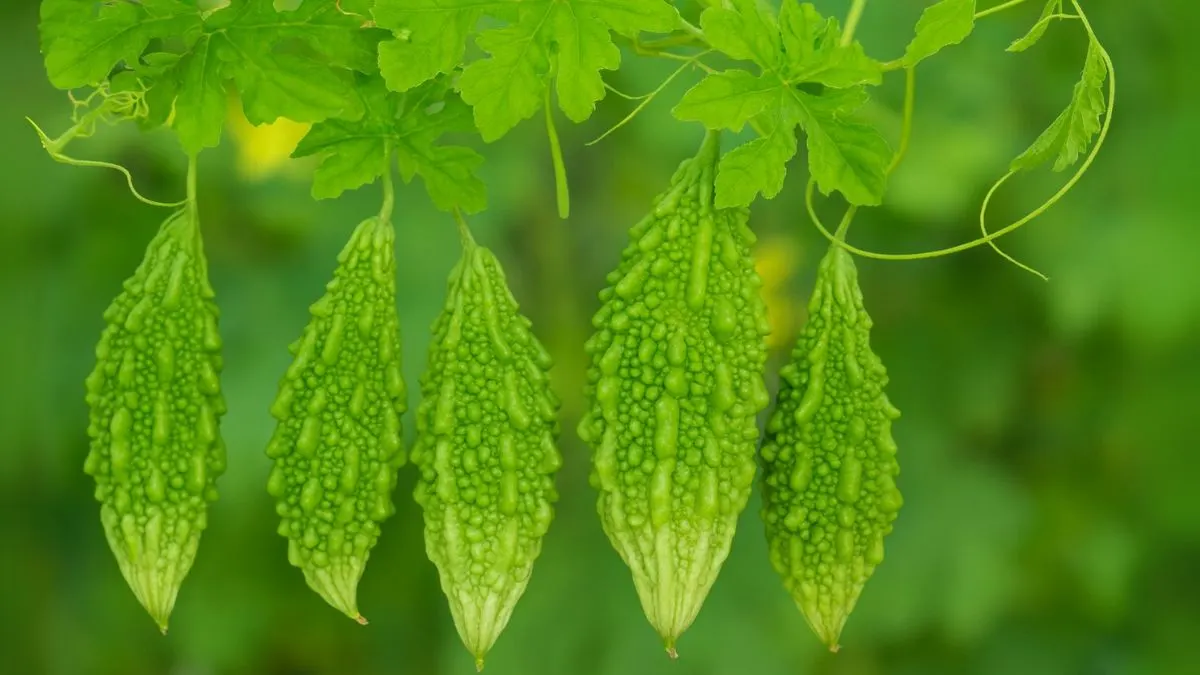Bitter gourd, also known as karela, may not win any taste contests, but it is a superstar when it comes to health benefits. Packed with antioxidants, vitamins, and compounds that help regulate blood sugar, this humble vegetable is worth adding to your diet. The best part? You don’t have to rely on market produce—you can easily grow it in your own backyard, terrace, or even in large containers.
When I first started gardening, I was hesitant about growing bitter gourd because of its reputation for being “difficult.” But with the right soil, sunlight, and a sturdy trellis, it grew like wildfire. If you’re ready to try your hand at it, this guide will show you exactly how.
Why Choose Bitter Gourd for Your Garden?

- Health benefits: Rich in iron, magnesium, and Vitamin C, bitter gourd is known for controlling blood sugar and improving digestion.
- High yield: A single vine can produce multiple fruits in a season.
- Global demand: From India to the USA and Canada, bitter gourd is a staple in many cuisines.
Ideal Growing Conditions
Bitter gourd needs warmth, light, and well-prepared soil to thrive.
- Soil: The best option is sandy loam soils rich in organic matter with good drainage and pH range of 6.5–7.5.
- Sunlight: Plant bitter gourd seeds in a location that gets 6 to 8 hours of sunlight every day. In fact, five to eight hours of direct sunlight are important for this plant.
- Temperature: It grows well in mean air temperatures of 24–27 °C, making it perfect for summer planting.
Also Read: How To Help Your Yucca Plant Flower
Preparing the Soil
- Loosen the soil to a depth of 12–15 inches.
- Mix in compost or organic manure to improve fertility.
- Ensure good drainage—waterlogging is the enemy of bitter gourd.
If you’re using containers, pick one that is at least 15–18 inches deep and wide.
Planting Bitter Gourd Seeds
- Seed selection: Choose healthy, disease-free seeds.
- Pre-soaking: Soak seeds in warm water overnight to speed up germination.
- Spacing: Plant seeds 1 inch deep and 12–15 inches apart.
- Location: Remember, the plant prefers full sun gardens with a minimum of 6 hours of direct sunlight.
In colder climates like Canada or the northern USA, start seeds indoors and transplant them once the weather warms up.
Providing Support: Trellis and Training
Bitter gourd is a climber and needs strong support.
- Install a bamboo or wire trellis.
- Train the vines upward—this improves airflow, reduces pests, and makes harvesting easier.
- Vertical growth also ensures fruits develop straight instead of curled.
Also Read: The Ultimate Do’s & Don’ts for Potted Chrysanthemums
Watering and Fertilization
- Watering: Keep the soil consistently moist but never soggy. Drip irrigation works wonders.
- Fertilization: Start with nitrogen-rich fertilizer for leafy growth. Switch to phosphorus and potassium during flowering and fruiting stages.
Organic options like compost tea, neem cake, or bone meal are great for sustained growth.
Pest and Disease Management
Like most gourds, bitter gourd is prone to pests.
- Common pests: Fruit flies, aphids, and beetles.
- Diseases: Powdery mildew, downy mildew, and mosaic virus.
Tips to manage problems:
- Spray neem oil every 7–10 days.
- Remove diseased leaves quickly.
- Avoid overwatering to reduce fungal issues.
Harvesting Bitter Gourd
Bitter gourd matures quickly—usually 55–60 days after sowing.
- Harvest when fruits are young, green, and tender (about 4–6 inches long).
- Overripe fruits turn yellow and taste too bitter.
- Regular picking encourages the vine to produce more fruits.
Also Read: The Secret Joy Behind Every Rainy Day
Quick Reference for Growing Bitter Gourd
Factor |
Requirement |
Soil |
Sandy loam soils rich in organic matter with good drainage and pH range of 6.5–7.5 |
Sunlight |
6–8 hours of direct sunlight daily |
Temperature |
Mean air temperatures of 24–27 °C |
Container Depth |
15–18 inches |
Harvest Time |
55–60 days after sowing |
Personal Experience
When I grew bitter gourd on my terrace garden, I underestimated its climbing power. Within weeks, the vines had covered the entire trellis, creating a natural green roof. Not only did I enjoy a steady supply of organic karela, but the vines also provided shade during summer afternoons. Cooking with homegrown bitter gourd also felt special. The taste was fresher, less harsh, and packed with nutrients compared to store-bought ones.
Growing bitter gourd is not just about cultivating a vegetable—it’s about embracing a plant that supports health and sustainability. With the right soil, plenty of sunlight, and consistent care, you can enjoy a season full of fresh, organic gourds.
Whether you live in India, the USA, or Canada, this resilient plant adapts well and rewards you generously. So grab a packet of seeds, prepare a sunny spot, and watch your garden transform with the vines of this powerhouse vegetable.






